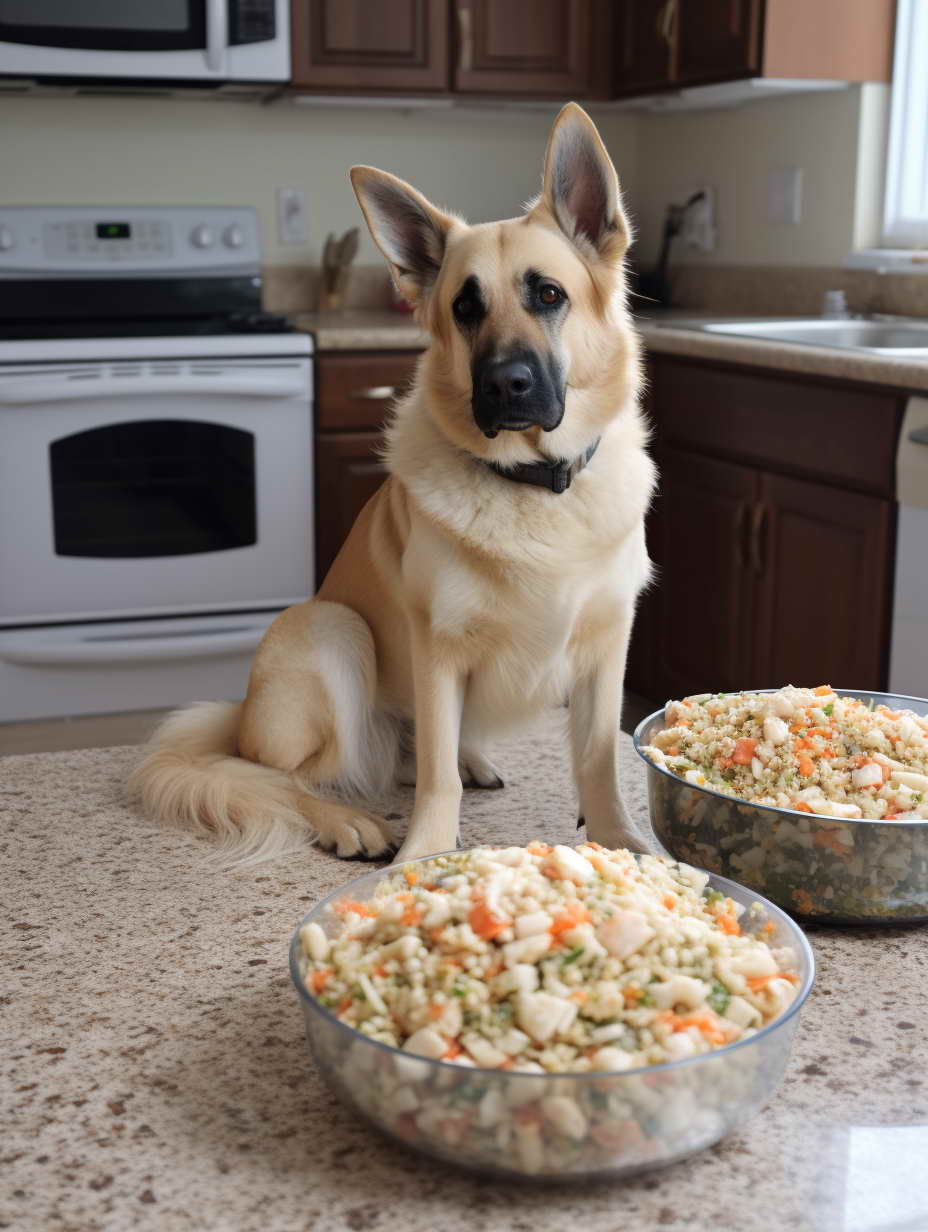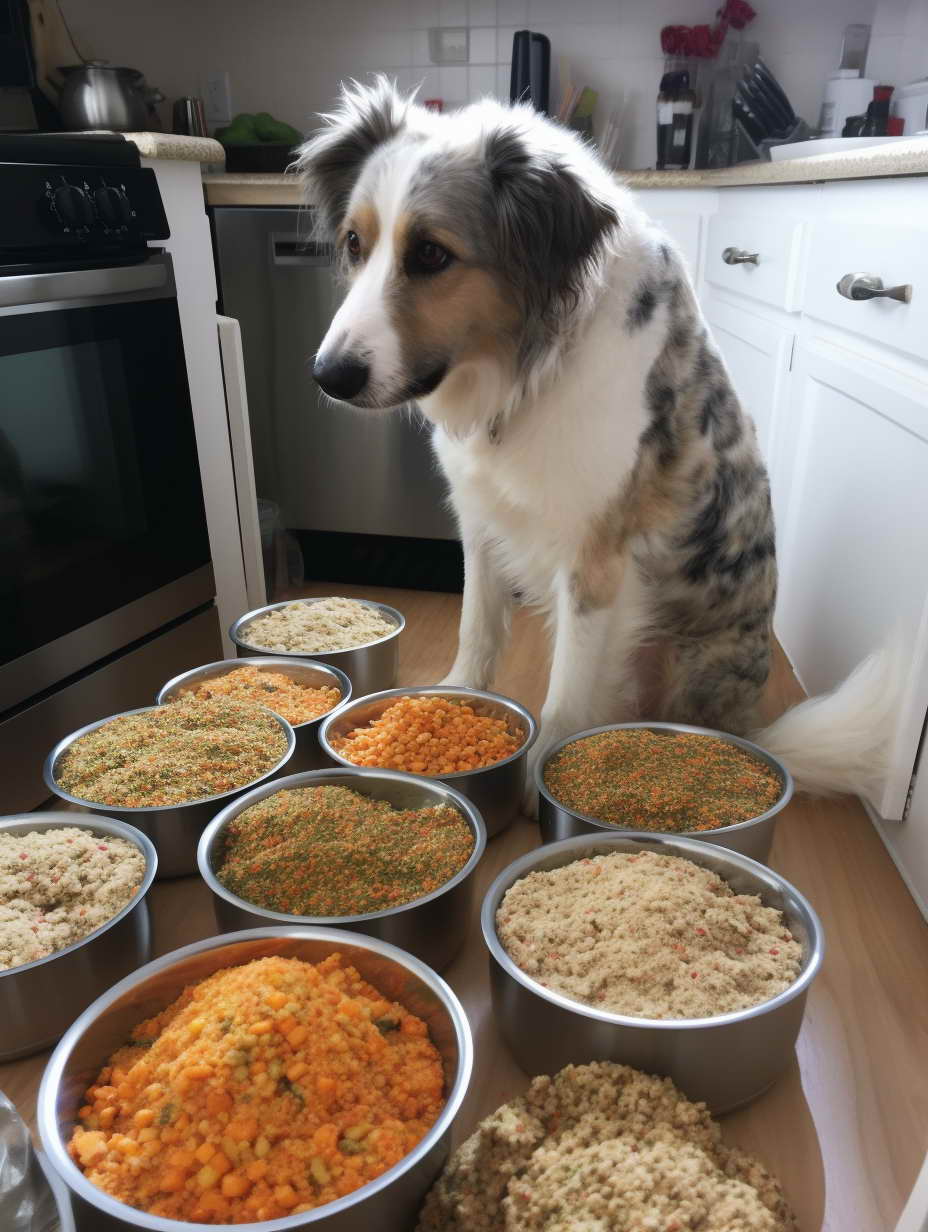How To Make Homemade Dog Food With Chicken
Introduction
Welcome to the ultimate guide on “How To Make Homemade Dog Food With Chicken.” If you’re a dog owner who wants to provide the best nutrition for your furry friend, you’ve come to the right place. In this article, we will walk you through the process of preparing healthy and delicious homemade dog food using chicken as the main ingredient. Our step-by-step guide, expert insights, and FAQs will ensure your dog gets the nutrition they deserve.
Benefits of Homemade Dog Food
When it comes to the well-being of your beloved canine companion, providing homemade dog food offers a multitude of advantages. Here, we’ll explore these benefits in detail, giving you all the reasons to opt for homemade meals over commercial alternatives.
Improved Nutrition Tailored to Your Dog’s Needs
One of the most significant advantages of preparing homemade dog food is the ability to tailor the nutrition to your dog’s specific needs. Every dog is unique, and their dietary requirements can vary based on factors such as age, breed, activity level, and any health concerns they may have. Homemade meals allow you to adjust the ingredients to meet these individual needs precisely.
For instance, if you have a high-energy dog, you can increase the protein content in their meals. Conversely, if your dog has allergies or sensitivities, you have complete control over the ingredients, ensuring that your furry friend doesn’t consume anything that might trigger a negative reaction.
Control Over Ingredients to Avoid Allergies or Sensitivities
Many commercial dog foods contain fillers, artificial additives, and preservatives that can be detrimental to your dog’s health. By preparing homemade meals, you have full control over what goes into your dog’s dish. This means you can exclude any ingredients that your dog may be allergic to or sensitive to, such as certain grains or artificial flavorings.
This level of control is especially crucial if your dog has food allergies or sensitivities, as it allows you to create hypoallergenic recipes that cater specifically to their needs.
No Additives or Preservatives
Commercial dog foods often contain artificial additives and preservatives to prolong shelf life. While these additives may serve the manufacturer’s interests, they may not be in the best interest of your dog’s health. Homemade dog food, on the other hand, is free from such additives, ensuring that your furry friend enjoys a diet free from potentially harmful chemicals.
By eliminating these artificial substances, you reduce the risk of adverse reactions and potential long-term health issues for your dog. Homemade meals are not only more nutritious but also safer in the long run.
Cost-Effective in the Long Run
While some may argue that preparing homemade dog food is more expensive upfront, it can be remarkably cost-effective in the long run. When you purchase high-quality ingredients in bulk and prepare larger batches of dog food, you can save money compared to buying premium commercial dog food.
Additionally, the potential savings from reduced veterinary bills due to improved health can outweigh the initial investment in homemade dog food. A healthier diet can lead to fewer health issues and fewer visits to the vet, ultimately saving you money and ensuring a higher quality of life for your furry companion.

How To Make Homemade Dog Food With Chicken
In this section, we’ll delve into the specifics of crafting homemade dog food with chicken, a protein source that’s not only delicious but also packed with essential nutrients for your furry friend. Follow these steps to create a nutritious and tasty meal that your dog will love.
Choosing Quality Ingredients
The foundation of any great homemade dog food recipe is the quality of the ingredients you use. When selecting chicken for your dog’s meal, opt for fresh, high-quality cuts. Boneless, skinless chicken breasts or thighs are excellent choices. Avoid using chicken bones, as they can splinter and pose a choking hazard or cause internal injuries.
Cooking Methods
How you prepare the chicken can affect both its flavor and nutritional value. Here are three popular cooking methods:
Boiling
Boiling chicken is a straightforward and healthy cooking method. Follow these steps:
- Place the chicken in a pot of water, making sure it’s fully submerged.
- Bring the water to a boil, then reduce the heat to a simmer.
- Cook the chicken until it’s thoroughly cooked and no longer pink inside, usually for about 12-15 minutes.
- Remove the chicken from the water and let it cool.
- Shred the cooked chicken into bite-sized pieces for your dog’s convenience.
Baking
Baking chicken can add a savory flavor to your dog’s meal. Here’s how to do it:
- Preheat your oven to 350°F (175°C).
- Place the chicken breasts or thighs on a baking sheet.
- Season with a pinch of salt or dog-safe herbs for added flavor.
- Bake for about 25-30 minutes or until the chicken is fully cooked and no longer pink in the center.
- Allow the chicken to cool before serving. You can shred or cube it, depending on your dog’s preference.
Steaming
Steaming is a gentle cooking method that preserves nutrients. Here’s how to steam chicken for your dog:
- Cut the chicken into small, uniform pieces.
- Place the chicken in a steamer basket over boiling water.
- Steam for approximately 10-15 minutes or until the chicken is fully cooked.
- Let it cool and serve it to your dog.
Balanced Diet
To ensure your dog’s homemade chicken-based meals provide a balanced diet, consult your veterinarian. They can recommend the appropriate proportions of chicken, vegetables, and grains based on your dog’s age, size, and specific dietary needs.
A balanced diet typically includes:
- Protein (from chicken)
- Vegetables (e.g., sweet potatoes, carrots, peas)
- Grains (e.g., brown rice, quinoa)
- Essential fatty acids (e.g., fish oil or flaxseed oil)
Your vet will help you create recipes that meet these criteria and provide optimal nutrition for your furry friend.
Meal Preparation
Meal preparation for your dog should focus on portion control and proper storage.
Portion Control
Determine the appropriate portion size for your dog based on their size, age, and activity level. Overfeeding can lead to obesity, while underfeeding can result in malnutrition.
Storage
Refrigerate or freeze any unused portions of homemade dog food promptly. Use airtight containers to maintain freshness and prevent spoilage. Proper storage ensures that your dog receives safe and nutritious meals every time.
Recipes for Inspiration
To add variety to your dog’s diet, consider experimenting with different recipes. Some popular options include chicken and sweet potato stew, chicken and rice casserole, or even chicken and vegetable stir-fry. These recipes can keep mealtime exciting for your furry companion while providing essential nutrients.
With these steps, you can confidently create homemade dog food with chicken that not only meets your dog’s nutritional needs but also satisfies their taste buds. Remember that consulting your veterinarian for personalized guidance is essential to ensure your dog receives the best possible care through their diet.
Common Mistakes to Avoid
While preparing homemade dog food with chicken can be a rewarding endeavor, it’s essential to be aware of common mistakes that dog owners often make. Avoiding these pitfalls will help ensure your furry friend’s safety, health, and enjoyment of their meals.
Not Consulting Your Vet
One of the most significant mistakes you can make when transitioning to homemade dog food is doing so without consulting your veterinarian. Every dog has unique dietary needs, and your vet is the best source of guidance to ensure your dog receives a balanced diet tailored to their age, size, breed, and any specific health concerns.
Your vet can help you determine the right proportion of chicken, vegetables, grains, and supplements necessary for your dog’s optimal health. Skipping this crucial step can lead to nutritional imbalances or deficiencies that may harm your dog in the long run.
Using Excessive Spices or Salt
While you might be tempted to add spices or salt to your dog’s homemade chicken meals for flavor, it’s crucial to resist this urge. Dogs have sensitive digestive systems, and many human seasonings can be toxic to them. Onions, garlic, and excessive salt, for example, can be harmful or even fatal to dogs.
Instead, focus on using dog-safe herbs and spices in moderation, or consider flavoring their meals with low-sodium broth or a small amount of chicken broth without onions or garlic. Always err on the side of caution when it comes to seasoning your dog’s food.
Ignoring Portion Control
Proper portion control is essential to your dog’s health. Overfeeding can lead to obesity, which can result in a host of health problems, including joint issues, heart disease, and diabetes. Underfeeding, on the other hand, can lead to malnutrition and inadequate energy levels.
To avoid these issues, follow the portion recommendations provided by your vet based on your dog’s size, age, and activity level. Adjust portion sizes as needed to maintain a healthy weight and condition for your furry friend.
Neglecting Food Safety
Homemade dog food, like any human food, can spoil if not handled and stored correctly. Neglecting food safety measures can lead to bacterial contamination and potentially harm your dog. Here are some key food safety tips:
- Thoroughly Cook Chicken: Ensure chicken is cooked to the point where it’s no longer pink inside to kill any harmful bacteria.
- Prompt Refrigeration: Refrigerate or freeze any unused portions of homemade dog food immediately to prevent spoilage.
- Airtight Containers: Use airtight containers to store dog food to maintain freshness and prevent contamination.
- Hygiene: Wash your hands and all utensils thoroughly before and after handling dog food.
By avoiding these common mistakes, you can provide your dog with the best possible homemade meals that are not only delicious but also safe and nutritious. Remember that your veterinarian is your most valuable resource for tailoring your dog’s diet to their specific needs and ensuring their overall well-being.

Frequently Asked Questions (FAQs)
Is homemade dog food with chicken suitable for all breeds?
Homemade dog food can be tailored to suit all breeds, but consult your vet for breed-specific recommendations.
How often should I feed my dog homemade chicken-based meals?
The frequency depends on your dog’s dietary needs and preferences. Most dogs can enjoy chicken-based meals a few times a week.
Can I use frozen chicken for dog food?
Yes, as long as it is thawed and cooked thoroughly to kill any harmful bacteria.
Should I add supplements to my dog’s homemade chicken food?
Supplements may be necessary to meet specific nutritional needs. Consult your vet for guidance.
Can I include vegetables like broccoli and carrots in the chicken dog food?
Yes, vegetables can provide essential vitamins and fiber. Ensure they are cooked and chopped finely for easy digestion.
What should I do if my dog refuses homemade chicken food?
Try different recipes, textures, and flavors. Some dogs have specific preferences.
Final Thought
By now, you should have a clear understanding of how to make homemade dog food with chicken. This nutritious and delicious option allows you to provide your furry friend with the best possible care. Remember to consult your veterinarian for personalized advice and enjoy the joy of watching your dog savor every homemade meal.

Leave a Reply